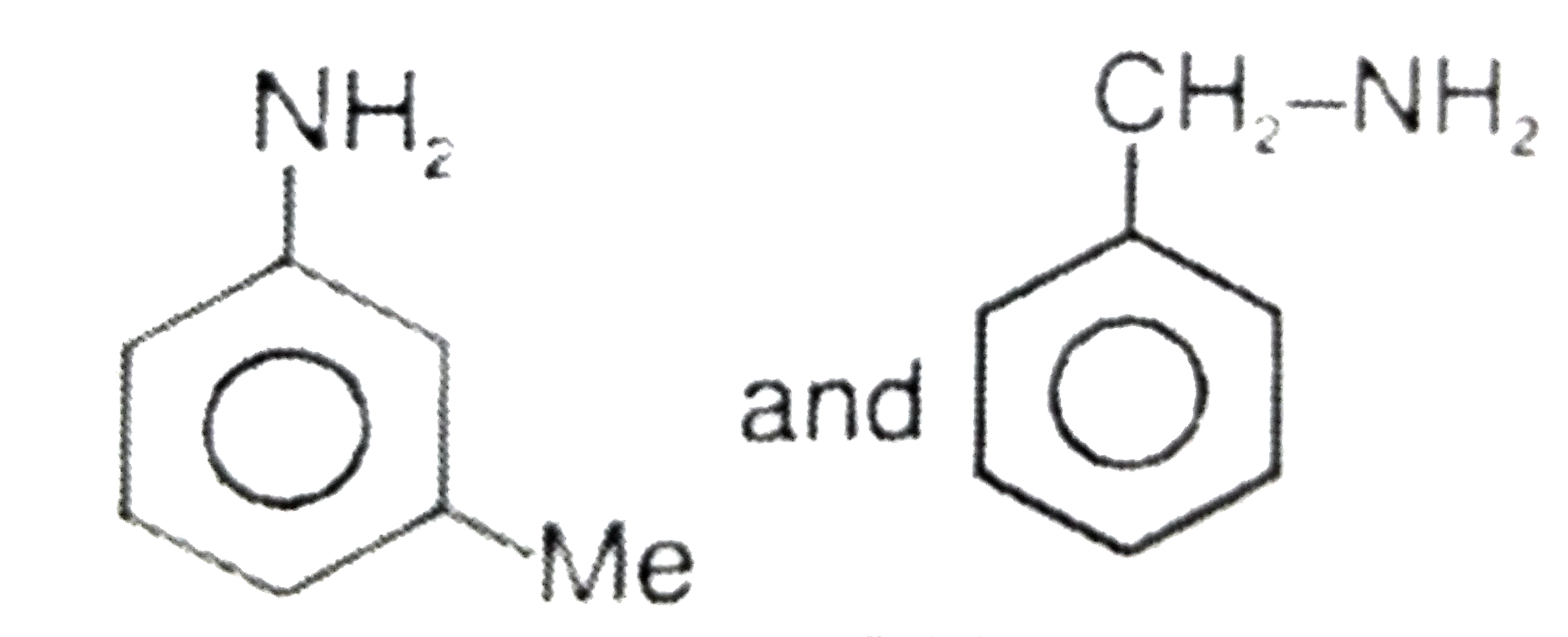p-Chloroaniline and anilinium hydrochloride can be distinguished by :
Sandmeyer reaction
NaHCO3
AgNO3
Carbylamine test
The correct Answer is:( c)
To distinguish between p-chloroaniline and anilinium hydrochloride, we can follow these steps:
1. Identify the Compounds:
- p-Chloroaniline (C6H4ClNH2) has an amino group (-NH2) and a chlorine atom (Cl) at the para position on the benzene ring.
- Anilinium hydrochloride (C6H7N·HCl) is the protonated form of aniline, where the amino group is positively charged due to the addition of a hydrogen ion (H+) from hydrochloric acid (HCl).
2. Understand the Chemical Properties:
- p-Chloroaniline contains a chlorine atom that can act as a leaving group.
- Anilinium hydrochloride contains a chloride ion (Cl-) that is part of the salt.
3. Perform a Reaction Test:
- To distinguish between the two compounds, we can perform a reaction with silver nitrate (AgNO3).
- When AgNO3 is added to anilinium hydrochloride, the chloride ion (Cl-) will react with silver ions (Ag+) to form silver chloride (AgCl), which is a white precipitate.
4. Observe the Results:
- If the white precipitate of AgCl forms, it indicates the presence of anilinium hydrochloride.
- If no precipitate forms, it indicates the presence of p-chloroaniline, as the chlorine in this compound is part of the aromatic structure and cannot be displaced.
5. Conclusion:
- Therefore, the test using AgNO3 allows us to distinguish between p-chloroaniline and anilinium hydrochloride based on the formation of a white precipitate.
Final Answer:
The compounds can be distinguished by using AgNO3, which will produce a white precipitate of AgCl in the case of anilinium hydrochloride.
---
- p-Chloroaniline (C6H4ClNH2) has an amino group (-NH2) and a chlorine atom (Cl) at the para position on the benzene ring.
- Anilinium hydrochloride (C6H7N·HCl) is the protonated form of aniline, where the amino group is positively charged due to the addition of a hydrogen ion (H+) from hydrochloric acid (HCl).
- p-Chloroaniline contains a chlorine atom that can act as a leaving group.
- Anilinium hydrochloride contains a chloride ion (Cl-) that is part of the salt.
- To distinguish between the two compounds, we can perform a reaction with silver nitrate (AgNO3).
- When AgNO3 is added to anilinium hydrochloride, the chloride ion (Cl-) will react with silver ions (Ag+) to form silver chloride (AgCl), which is a white precipitate.
- If the white precipitate of AgCl forms, it indicates the presence of anilinium hydrochloride.
- If no precipitate forms, it indicates the presence of p-chloroaniline, as the chlorine in this compound is part of the aromatic structure and cannot be displaced.
- Therefore, the test using AgNO3 allows us to distinguish between p-chloroaniline and anilinium hydrochloride based on the formation of a white precipitate.
The compounds can be distinguished by using AgNO3, which will produce a white precipitate of AgCl in the case of anilinium hydrochloride.
Topper's Solved these Questions
- ORGANIC COMPOUNDS WITH FUNCTIONAL GROUPBOOK - CENGAGE CHEMISTRY ENGLISHCHAPTER - ORGANIC COMPOUNDS WITH FUNCTIONAL GROUPEXERCISE - Archives Fill In The Blanks
3 Videos
- ORGANIC COMPOUNDS WITH FUNCTIONAL GROUPBOOK - CENGAGE CHEMISTRY ENGLISHCHAPTER - ORGANIC COMPOUNDS WITH FUNCTIONAL GROUPEXERCISE - Archives Analytical And Descriptive
24 Videos
- ORGANIC COMPOUNDS WITH FUNCTIONAL GROUPBOOK - CENGAGE CHEMISTRY ENGLISHCHAPTER - ORGANIC COMPOUNDS WITH FUNCTIONAL GROUPEXERCISE - Archives Assertion-Reasoning
2 Videos
- NUCLEAR CHEMISTRYBOOK - CENGAGE CHEMISTRY ENGLISHCHAPTER - NUCLEAR CHEMISTRYEXERCISE - Archives Subjective
13 Videos
- P-BLOCK GROUP 15 ELEMENTS - THE NITROGEN FAMILYBOOK - CENGAGE CHEMISTRY ENGLISHCHAPTER - P-BLOCK GROUP 15 ELEMENTS - THE NITROGEN FAMILYEXERCISE - Exercises Archives (Subjective)
28 Videos
Similar Questions
Knowledge Check
Phenol and benzoic acid can be distinguished by :
Aaqueous NaHCO3Baqueous NaNO3Caqueous NaOHDconc. H2SO4Phenol and cyclohexanol can be distinguished by using :
AFeCl3BNaCPCl3DCH3COClH-COOH and H-CHO can be distinguished by :
ATollen's reagentBFehling's solutionCNaHCO3 solutionDHgCl2 solution
Propyne and propene can be distinguished by :
View SolutionProduct(A) and (B)can be distinguished by

View SolutionMethanol and ethanol can be distinguished by
View SolutionPhenol and carboxylic acid can be distinguished by
View SolutionAcetaldehyde and benzaldehyde can not be distinguished by
View Solution

 can be distinguish by
can be distinguish by